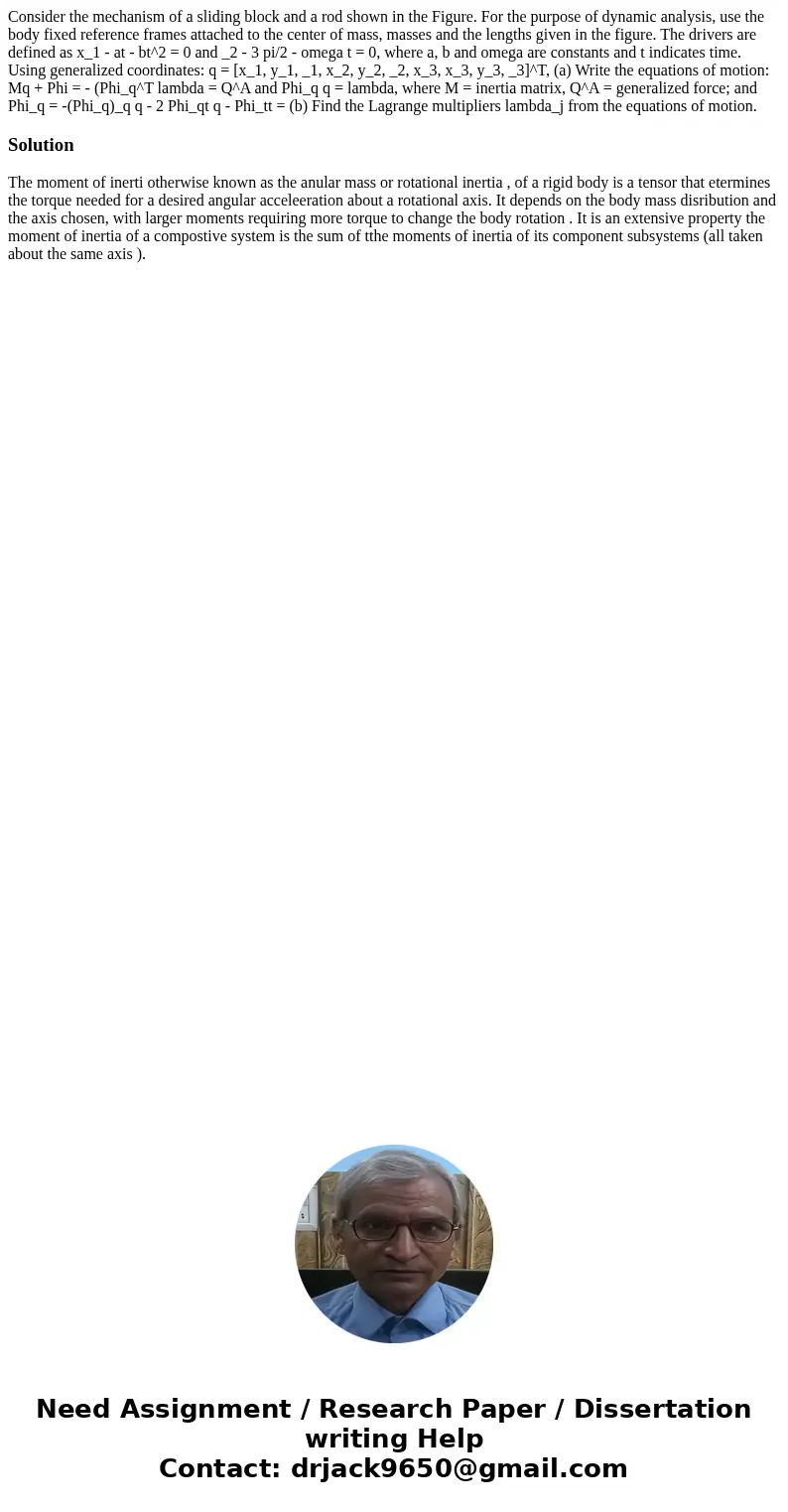Consider the mechanism of a sliding block and a rod shown in
Consider the mechanism of a sliding block and a rod shown in the Figure. For the purpose of dynamic analysis, use the body fixed reference frames attached to the center of mass, masses and the lengths given in the figure. The drivers are defined as x_1 - at - bt^2 = 0 and _2 - 3 pi/2 - omega t = 0, where a, b and omega are constants and t indicates time. Using generalized coordinates: q = [x_1, y_1, _1, x_2, y_2, _2, x_3, x_3, y_3, _3]^T, (a) Write the equations of motion: Mq + Phi = - (Phi_q^T lambda = Q^A and Phi_q q = lambda, where M = inertia matrix, Q^A = generalized force; and Phi_q = -(Phi_q)_q q - 2 Phi_qt q - Phi_tt = (b) Find the Lagrange multipliers lambda_j from the equations of motion. 
Solution
The moment of inerti otherwise known as the anular mass or rotational inertia , of a rigid body is a tensor that etermines the torque needed for a desired angular acceleeration about a rotational axis. It depends on the body mass disribution and the axis chosen, with larger moments requiring more torque to change the body rotation . It is an extensive property the moment of inertia of a compostive system is the sum of tthe moments of inertia of its component subsystems (all taken about the same axis ).

 Homework Sourse
Homework Sourse